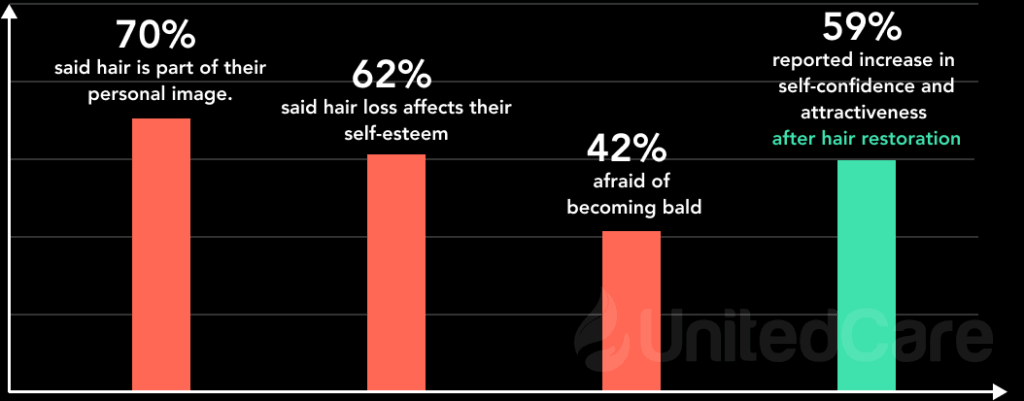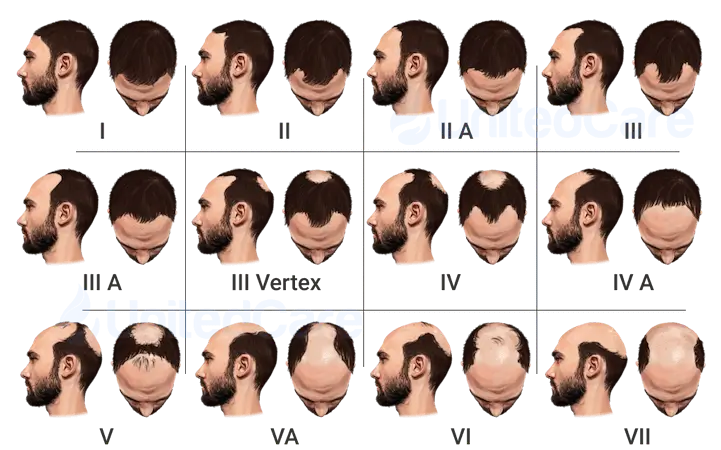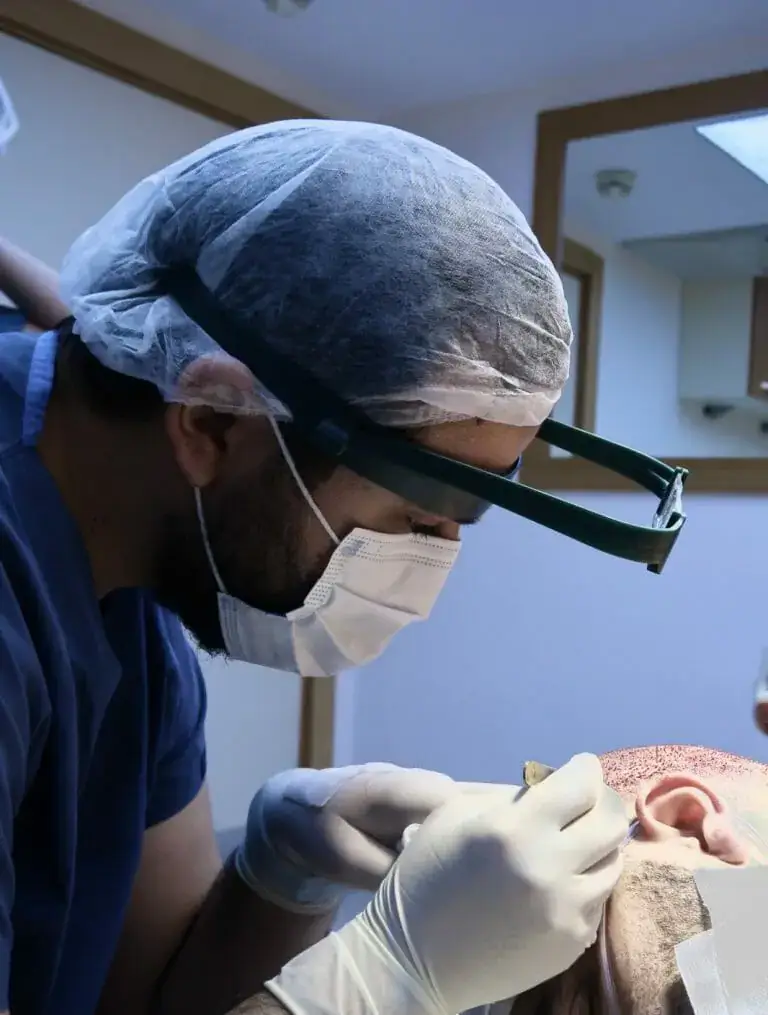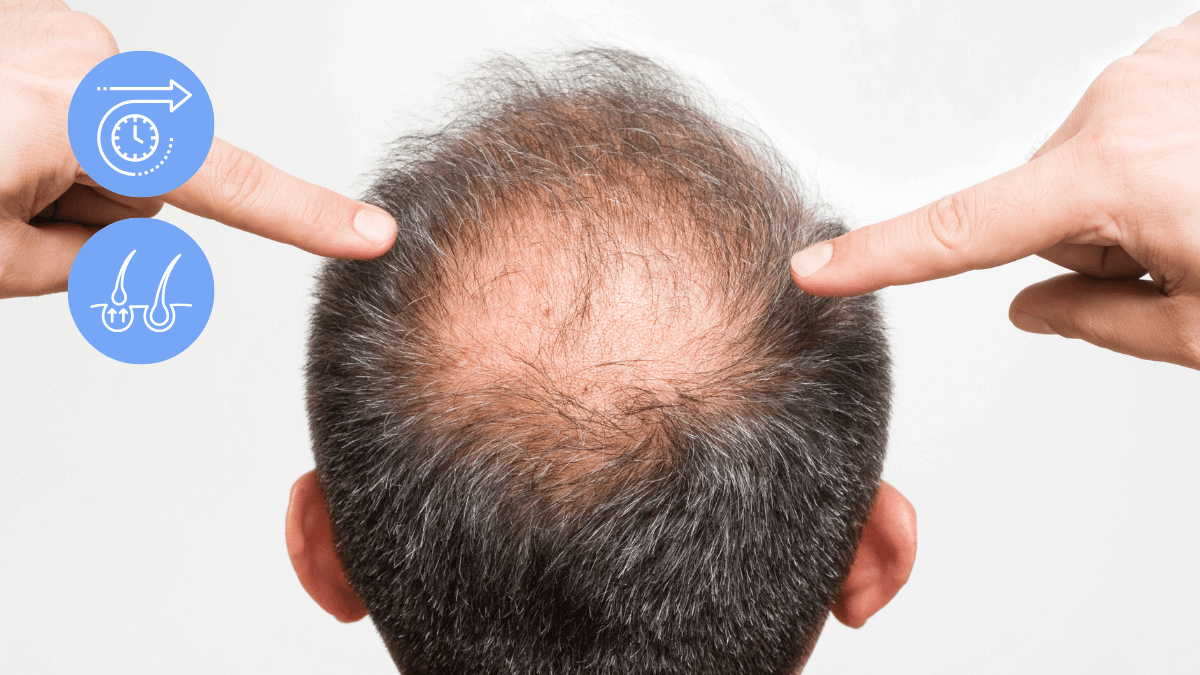TL;DR
➡ Not everyone can get a hair transplant. There are certain conditions you have to meet to be suitable for the surgery.
➡ If you are within the ideal age gap and still have enough necessary hair follicles in your head to match the balding, you are an ideal candidate.
➡ Patients who have excessively advanced balding areas, however, or those who are at their early ages of hair loss are not suitable for getting one.
In 2024, if you decide it is time to end your hair loss permanently and bring back your great look, the first result that would come up after a quick 5 minutes of online research would be hair transplants.
But the time you decide to act against your hair loss can affect the effectiveness of your treatment.
It can be because you have just noticed the first signs of your hair loss or because you have decided on a transplant after continuously experiencing hair loss for a long time.
And both are different cases for your future transplant.
Regardless of your decision, you deserve the best treatment for battling male pattern baldness. But whether that treatment should be a hair transplant can differ based on many factors.
For that reason, some crucial questions require answers so you can know whether you should get a hair transplant.
In this blog, I will go over these questions one by one and determine whether a hair transplant is the best next step for battling your hair loss:
Table of Contents
Let’s start by getting the most important question out of the way:
Can Anyone Have a Hair Transplant?
In many ways, the answer is no.
Usually, most patients from all kinds of backgrounds are generally suited for a hair transplant.
However, deciding on its effectiveness, success rate, and whether it is necessary, to begin with, depends on pre-determined requirements.
But aside from these requirements, you should also ask yourself this:
Have you become insecure and started losing self-confidence as your balding advanced?
💡 Most men with male pattern baldness (Androgenetic Alopecia) are affected heavily and feel their confidence being damaged.
Their mood goes down whenever they see themselves in photos or feel obliged to wear a hat to be comfortable in public.
Depression, anxiety, and social phobia problems may be seen in a person getting balding. And similarly, the reverse can be said as well:

➡️ As 59% of patients report an increase in self-confidence and attractiveness after hair restoration, psychological effects are also an important indicator of whether a person can get a hair transplant.
These requirements are essential for deciding whether a patient is eligible for hair transplant surgery.
So, the question we must focus on is whether you should get a hair transplant and how we can decide whether you are a good transplant:
Who Is a Good Candidate for a Hair Transplant? 🍀
⚠️ One common mistake that patients tend to make in a sudden decision is getting a hair transplant at the first sign of hair loss.
Remember that hair transplants should be considered when an area in your scalp experiences advanced stages of baldness, not when early ages of hair loss appear.
Modern medicine can offer alternative methods to stop and even reverse hair loss altogether before you even experience baldness, with many hair regrowth options.
However, if you have already past your early twenties, when most male patients see the first signs of their hair loss, then we can check if you are within the three groups of patients who are ideal for, can, and should get a hair transplant:
1- Patients with enough hair follicles and grafts on their scalp
Hair transplants require follicles and grafts, so their numbers from the healthy areas in your head that are not affected by male pattern baldness will heavily influence the outcome.
👉 The average number of grafts harvested in a hair transplant surgery is approximately 2000. That is why when you look up costs of hair transplant surgeries, clinics usually provide “2000 Graft Cost” along with the “price per graft cost.”
Based on this factor, your doctor can determine how difficult the surgery will be depending on how much more hair grafts are needed for surgery than the minimum 2000 limit.
Ultimately, your donor area should equal the balding area for best results.
2- Patients who are within the ideal age gap
In some cases, we can guess that patient’s body will likely reject the hair transplant after the surgery based on biological factors such as age.
👉 There is no scientifically definitive age threshold that you must pass to be eligible for hair transplant surgery.
However, we can determine an age gap based on the universal success rates of patients and the hair regrowth process of your body that changes throughout your life.
So, ideally, patients between the ages of 25-65 are best suited for this operation, as age strongly affects whether your hair is thick enough to survive the transplant.
3- Patients who have an advanced balding area on their scalp

A hair transplant is best suited for patients who show a clear sign of developed baldness rather than patients who are at the early ages of their hair loss.
There are several signs to look for to understand whether your hair is balding, such as seeing your scalp in the mirror, changing hair lines, and losing more hair than usual every day.
💡Overall, aside from these factors, whether you are comfortable with getting surgery is a factor that we highly value as well. So, as we never tire of reminding this essential factor, it is always the safest option to talk to your doctor before making a decision.
A hair transplant can be the right decision if you see yourself fitting into all these groups after going through them.
However, there are also some groups of patients who should not get a hair transplant as well. Let’s quickly go over them and why they should not get a hair transplant:
Who Shouldn’t Have a Hair Transplant? ⚠️
Aside from the positive requirements that are necessary for being eligible to get a hair transplant, there are also some conditions that we see as “negative.”
These conditions are definite reasons for putting on you into two groups of patients that should not get a hair transplant:
1- Patients who do not have enough hair grafts on their scalp
Patients with insufficient hair grafts and hair follicles to be harvested will have difficulty in the surgery process.
Due to the donor area being smaller than the balding area or a condition that actively destroys a patient’s hair follicles, such as scarring alopecia, your existing number of hair follicles will likely not be enough to cover up all the balding areas.
In some hazardous cases, this might cause you to lose your existing hair follicles altogether, which is why you should always consult a clinic with an expert dermatologist at present beforehand. 🩺
2- Patients who are outside of the ideal age gap
Sometimes, patients experience extreme shedding and hair loss in their youth before entering the ideal age gap, mostly due to excessive stress levels or genetic factors. So, they may be inclined to consider getting a hair transplant as soon as possible.
However, this will only create long-term pressure on your scalp’s overall health. That is because patients who are outside the ideal age gap, especially those under the age of 25, as in those ages, experience balding in its early, evolving, and aggressive era.
🔔 In these instances, it is best to ask your doctor whether to get a hair transplant right away or wait until the accelerated shedding phase slows down when you enter the age gap.
Ultimately, if you fit the target audience of hair transplants that we see as ideally healthy for getting the surgery, you can get an appointment immediately.
However, we accept that knowing you are a good candidate can be difficult, not to mention any concerns about how the transplantation process will go.
So, it is natural to have concerns even if you think you fit the criteria. This is where we come in:
Still Don’t Know If You’re a Good Candidate? 🩺

If you are still unsure whether you are eligible, you can have a free consultation in our clinic and find out.
At UnitedCare, we begin your hair transplant process by offering you a one-on-one consultation with our expert doctors and dermatologists to find the best-suited option together.
Our holistic approach provides you with a mix of the most advanced methods and bio-enhancements, to ensure 💊 that you do not need another surgery.
In your consultation, our expert doctors check your scalp’s health and medical background to decide which method is the most suited for you and, more importantly, if it is the right time for you to get a hair transplant.
After you have decided on a method, we begin the treatment with the utmost attention. 💉
But most importantly, we stay in contact with our patients even long after the treatment has already finished ensuring that the surgery succeeds in becoming a permanent one.
If you believe it is time to search for the proper method to return your shining hair to its deserving place, you can schedule a free call immediately.
🍀 Regardless of which medical option you choose, one policy in our clinic stays the same. We value creating a balance between your comfort and your health.
Ready to begin the journey? Click here to start the first step:
You can get a free consultation right now if you think you are a fitting candidate.
UnitedCare ensures that your hair transplant succeeds in becoming permanent:
Frequently Asked Questions (FAQs)
Can everyone get a hair transplant?
No, not exactly. Usually, most methods apply to almost every patient who suffers from male pattern baldness. However, you still need to meet some requirements to be part of most patients eligible for a hair transplant. These pre-determined requirements affect hair transplant surgeries’ success rate, effectiveness, and necessity. These mandatory requirements are being within the ideal age gap, having enough hair grafts and follicles, and having an advanced balding area on your scalp that is progressed enough to require a hair transplant surgery. Aside from these conditions, there are also factors for determining whether it is too late to get a hair transplant. To accurately say that a patient should not get a hair transplant, they must either be outside the ideal age gap or the number of hair grafts, and follicles on their scalp must be too low to get a hair transplant. In these instances, getting a hair transplant can technically still be possible. However, the chance of it being effective, and in other words, the chance of the transplanted hair successfully surviving the surgery, is really low. Furthermore, the transplanted hair may not be enough to cover the balded area in the first place completely. In either case, it is best to consult with your doctor beforehand.
At what stage is a hair transplant the best option?
A hair transplant is most successful when patients tend to this medical option after their alternatives for stopping or reversing hair loss are no longer helpful. Alternatively, a patient may have decided on getting a hair transplant long after the first signs of hair loss have already occurred and their balding has come to a point where some parts on their scalp have become visibly bald. To determine when this happens, we medically suggest our patients be within the ideal age gap of 25 to 65 for deciding on getting a hair transplant. If they are within the ideal age gap, getting a hair transplant can be considered if they also have lost a recognizable amount of hair loss that alternative hair regrowth medications can not bring back. However, before deciding on the surgery process, it is best to consult your clinic with an expert dermatologist to ensure hair regrowth medications cannot help the balded area due to insufficient hair follicles and grafts.
How bald can you be and still get a hair transplant?
In short, we suggest that for considering getting a hair transplant, a patient should still have a donor area equal to the balding area for the best results. As hair transplant surgeries require hair follicles and grafts, their success rates are directly connected to the number of hair follicles and grafts in a patient’s scalp. So, if your baldness has not progressed too much to completely consume all the hair follicles and grafts in your scalp to leave some for the hair transplant surgery, you can get one. The average number of grafts harvested in a hair transplant surgery is approximately 2000. That is why when you look up costs of hair transplant surgeries, clinics usually provide “2000 Graft Cost” along with the “price per graft cost.” Based on this factor, your doctor can determine how difficult the surgery will be depending on how much more hair grafts are needed for surgery than the minimum 2000 limit. Ultimately, the necessary amount of hair grafts and follicles can be determined by your doctor. We suggest that you get a consultation with an expert dermatologist first.

